Area: Science, Technology and Art
Grade Level: 8-9 (ages 13-15)
Course: STEAM
Timeframe: 90 min (2 didactic hours)
Lesson Overview
Six activities for two didactic period of 90 min include how germs and viruses are spreading, how we can measure virus contagious, and how we can stop them from spreading. One of our practices to stop germs from spreading is to use a face mask. So, in this lesson plan we give guidelines on how to design and create face masks for each student using unused and cheap materials.
Objectives
Upon completion of this Lesson students will be able to:
- Describe how germs and viruses are spreading
- Explain how to stop viruses from spreading
- Measure the virus contagious according to "r0" (mathematical problem)
- Identify the technology and the materials used for face masks
- Design a personal artistic shape of a face mask
- Create a simple face mask for protection (hands-on activity)
Material/ resources
- Interactive boarding application (optional): e.g. padlet, lino etc
- How do germs spread (Infographic)
- How can we stop virus from spreading?
- How do air filters work? (YouTube video)
- How coronavirus spreads through a population and how we can beat it (Simulation)
- CDC on Homemade Cloth Face Coverings (Instructions)
- How to make your own face mask
- Face mask differences (Project: Protect Instructions)
- WHO - Coronavirus disease pandemic (Info)
- Material: Οld t-shirts, pens-markers, scissors, rubber bands, strings (for the mask creation)
- Free Resources and Lessons for COVID-19
Lesson Activities
The plan can be completed in two didactic hours, the first one with 3 activities related to the germs - virus spreading and the second with also 3 activities related to the technology - materials of a face mask and its design - creation.
The teacher explains the differences between germs and virus and starts a small brainstorming session with the students that share their ideas and them dividing them into categories, about how germs and viruses spread (e.g. touching, eating, drinking, breathing, bites).
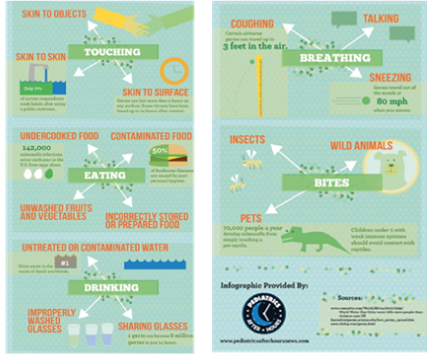
After the discussion s/he presents the proposed infographic, comparing their findings with the facts of the infographic. S/he can also distinguish the spreading of covid-19 through contact and in the air, and not by pets and insects. They also discuss, as a short reminder on how we can stop covid-19 from spreading.
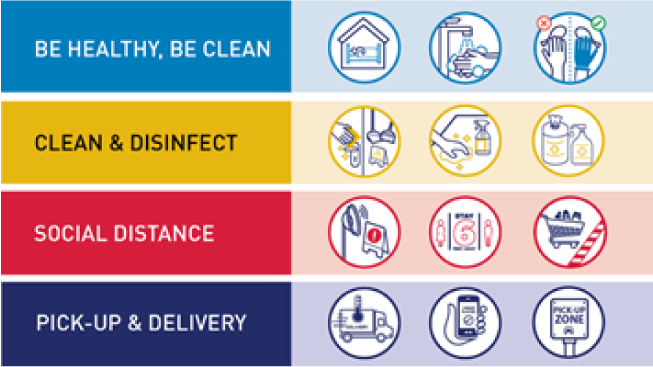
During this activity students form small groups and try to measure how contagious virus can be. Students, with their teacher’s help, measure the most usual basic reproduction number (r0 as an integer to make this simpler), which indicates how many new cases one infected person generates.
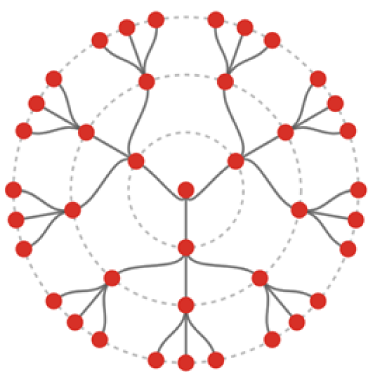
Students will be asked to find a mathematical expression for calculating the infected person according to the r0 parameter and the number of phases (in the figure r0=3, phases=3 and 39 people infected by the 1st in the center).
A small closing discussion about what and why do we use in order to stop germs from spreading (soap, alcohol-based solutions, bleach, face masks) and what we don’t use! Students can also watch the following YouTube video: "How do air filters work?".
The teacher presents 2-3 slides that aim to excite students’ imagination on how many types of masks there are, what materials they are made of, and the different uses.
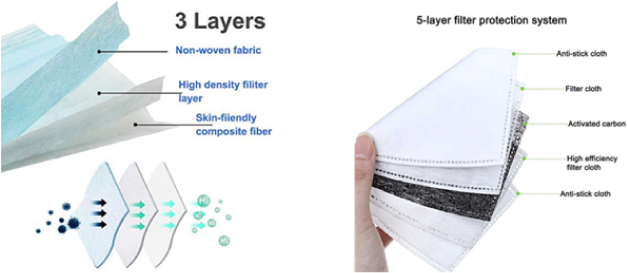
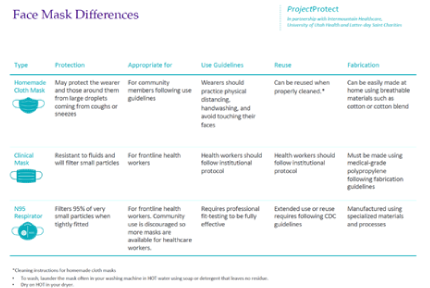
Design one face mask for each student in small groups, with unused or cheap materials (e.g. old T-shirts, pens-markers, scissors, rubber bands, strings etc.). Students could design a digital artifact for their mask and print this outsource. This activity could be more structured if an Art teacher could co-teach the lesson.
The creation of the masks could follow the guidelines given by WHO or Intermountain Healthcare, University of Utah Health and Latter-day Saint Charities.
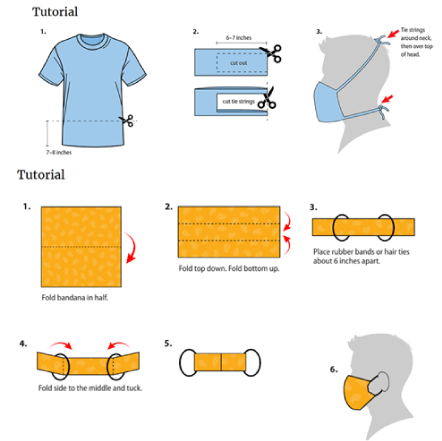
At the end of this lesson plan, students will be able to share the opinions (another way is to create a short evaluation form for students to express their satisfaction).
Instructions for teachers
The main methodologies and techniques of the course are based on brainstorming, discussion, collaboration, information access, problem solving, teamwork, and minimal time of presentations.
It is important for the teacher to challenge the ideas of his students, retrieving their previous knowledge and then comparing them with the existing sources and facts, focusing on possible misconceptions.
The most important approach is to design a personal face masks for each student, which can be created in collaboration with in small groups.
There are no assessment activities, only comparisons with good practices.